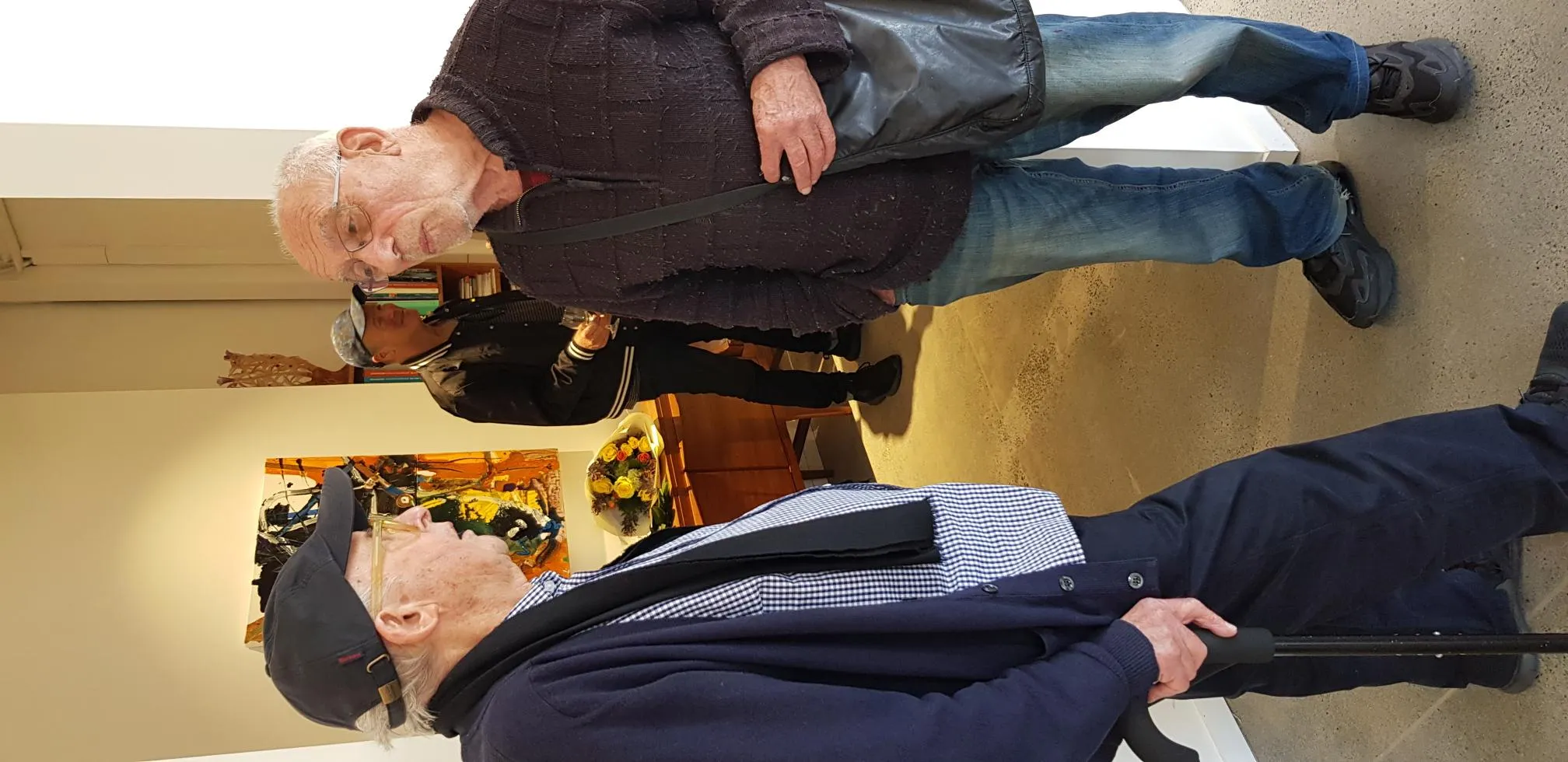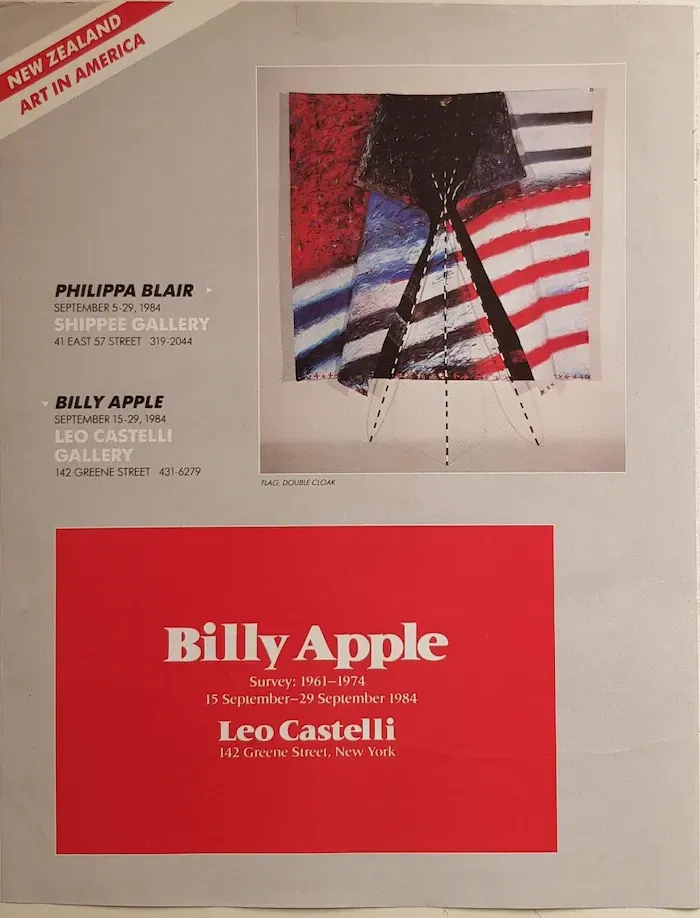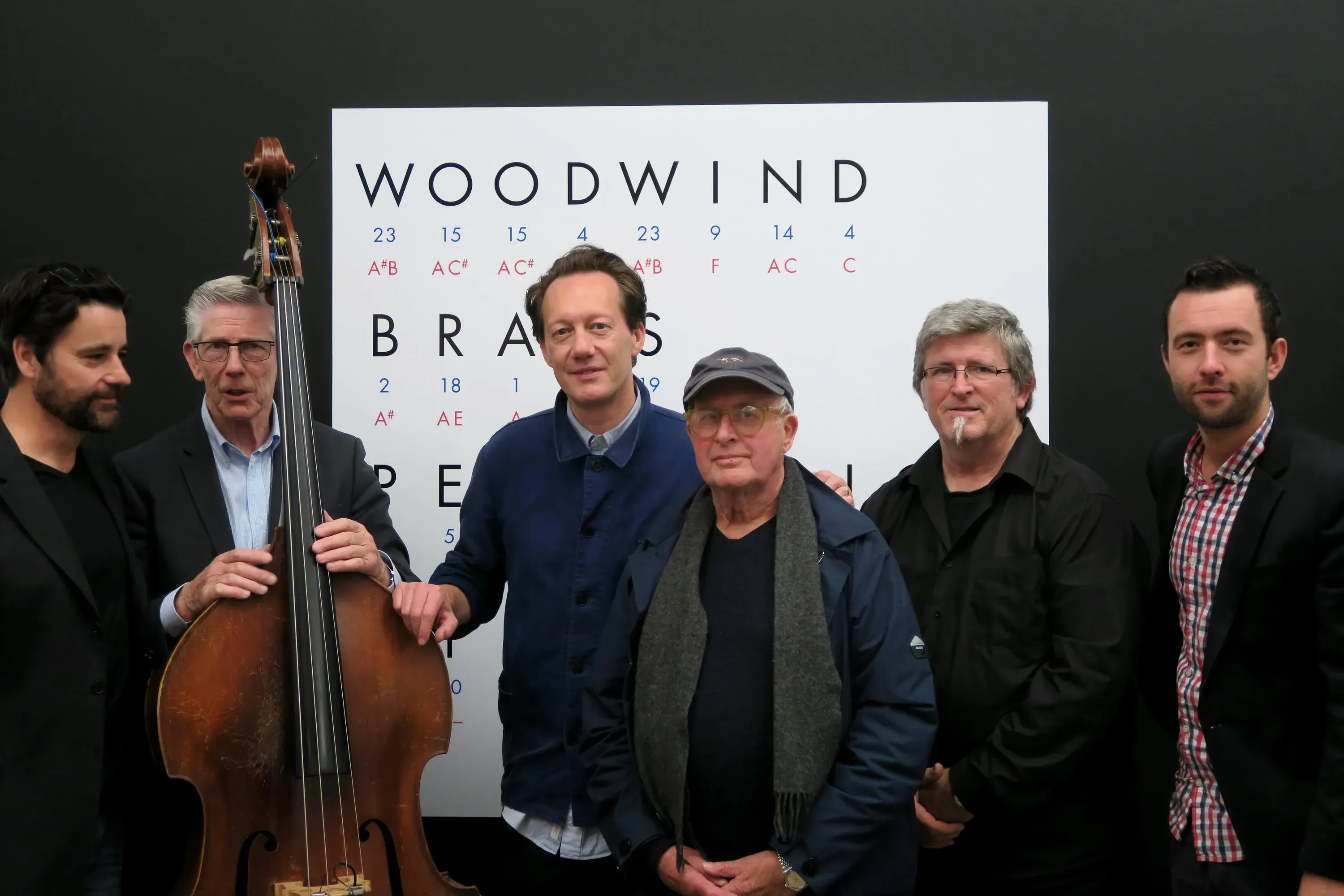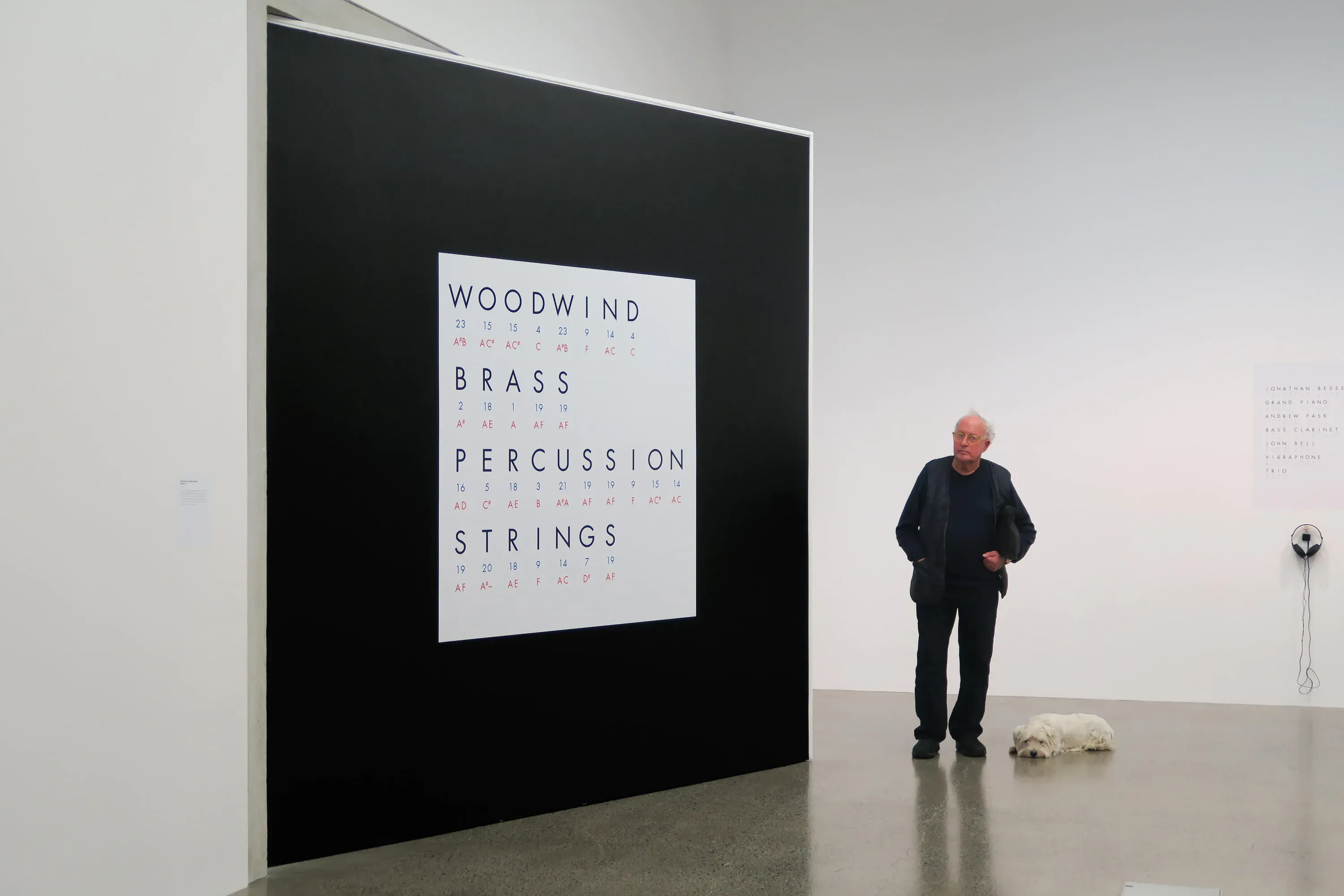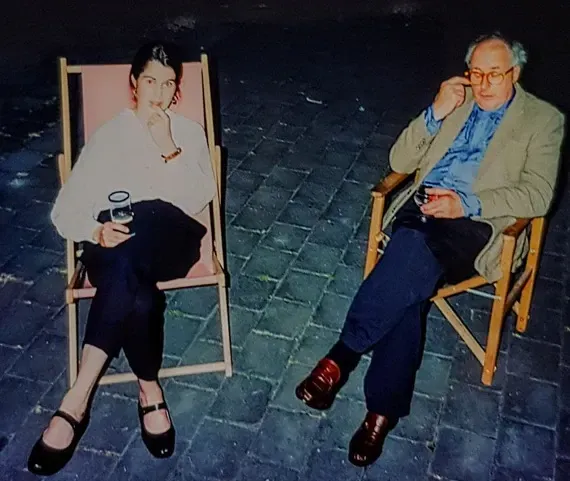My Friend, The Icon: Remembering Billy Apple
Written by
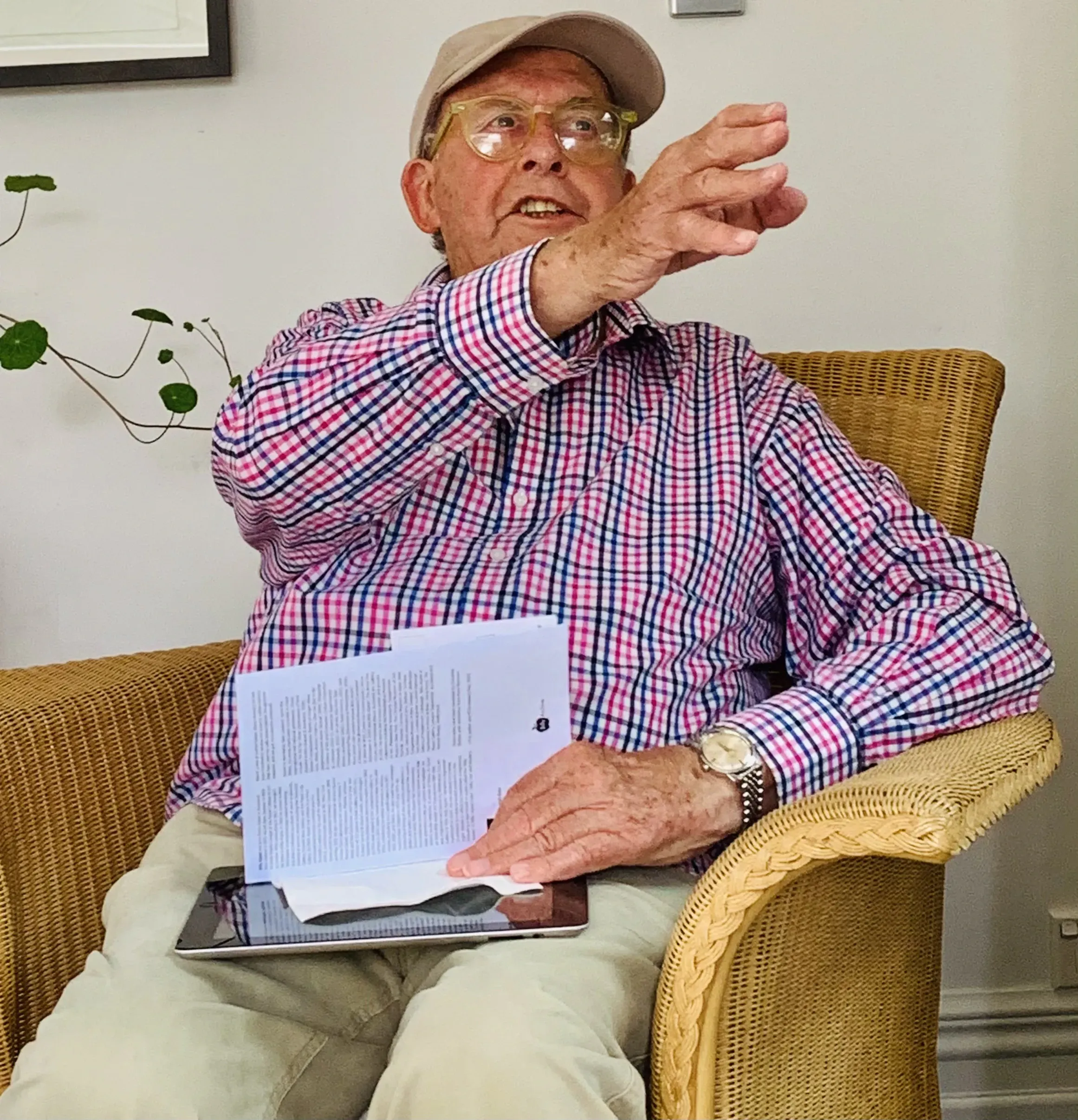
Everyone has their own Billy Apple story.
For me, it started with my Sugar and Billy and Mary’s Macintosh.
The two West Highland White Terriers spied each other on the Mt Eden verge and pulled us over to loiter while they sniffed bums. From there, we forged a relationship that came together on lovely walks around Mt Eden and chats in the local supermarket, carparks and cafes.
I’d been fascinated by the Billy Apple mind and his incredible influence on the international conceptual art scene and loved the way such a powerhouse of art, revered by so many could live this understated life just around the corner.
Each time I walked down the sculptural marble stairs he designed alongside his home from Monkey Hill towards Kowhai Intermediate I smiled and threw a little thanks Billy’s way.
When Mary orchestrated an interview with Billy for his exhibition at the Napier Museum and Theatre Gallery, Billy Apple® A Brand Looking for a Product 1962 – 2020 which traced his fascinating life story, I was chuffed.
Billy steered the questions exactly where he wanted. It would be fair to say, he liked to be in control. He was fastidious about the way he wanted to be presented. After all, his whole life was his brand. He had a presence, the sharpest wit - and Mary complemented him perfectly. Their minds were perfectly aligned. So sad for Mary to have lost a beautiful soulmate.
For Philippa Blair, it was visiting Billy’s studio in New York City in the early 1980's to observe his creative history and ability in different media.
The extent of his interests and talents opened up to me. He got me to work taking photos for him at Castelli gallery. (Keith Sonnier I think was the artist). We exhibited in an exhibition called Art in America – part of a group exhibition at dealer galleries.
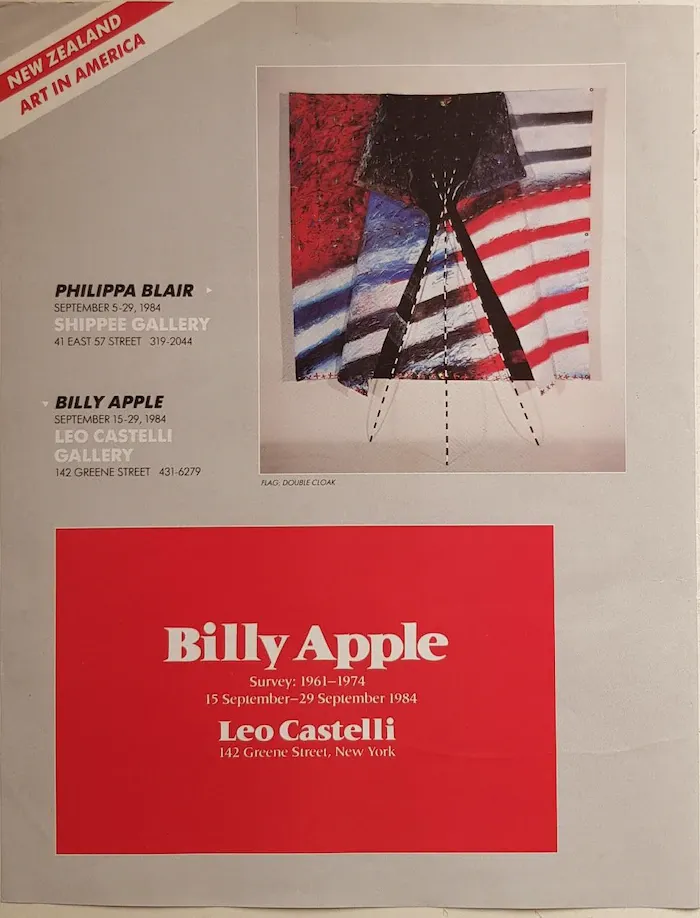
Our friendship goes back a long way as we both shared an American life as well as a life in New Zealand and he became a family friend. I’m still very friendly with his first wife Jackie and Mary was my student at Elam.
Billy was very supportive of my daughters, Taisha Brehaut, now a successful artist in New York and Alice Hutchison who is a writer, curator and former Gallery Director. He was always very loyal to us; he was a consummate professional and a very kind friend!
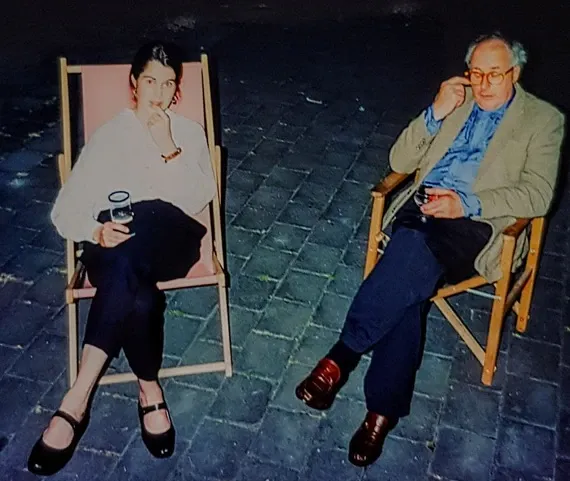
Billy Apple with young artist Taisha Brehaut at Philippa Blair's 50th birthday. Photo: Supplied.
We went to parties, weddings and art exhibition openings together. Mary and Billy came to my opening at Orex Art a couple of months ago. He was in great form then. He was always concerned about things other than just art. He was very astute.
Billy was such a dynamic presence wherever he chose to go! Every meeting was memorable. Everywhere he went, he changed the energy of the room. He could be opinionated, loving, passionate but always lively. He had a lot of energy for conversation and nailed points of interest that had all sorts of implications.
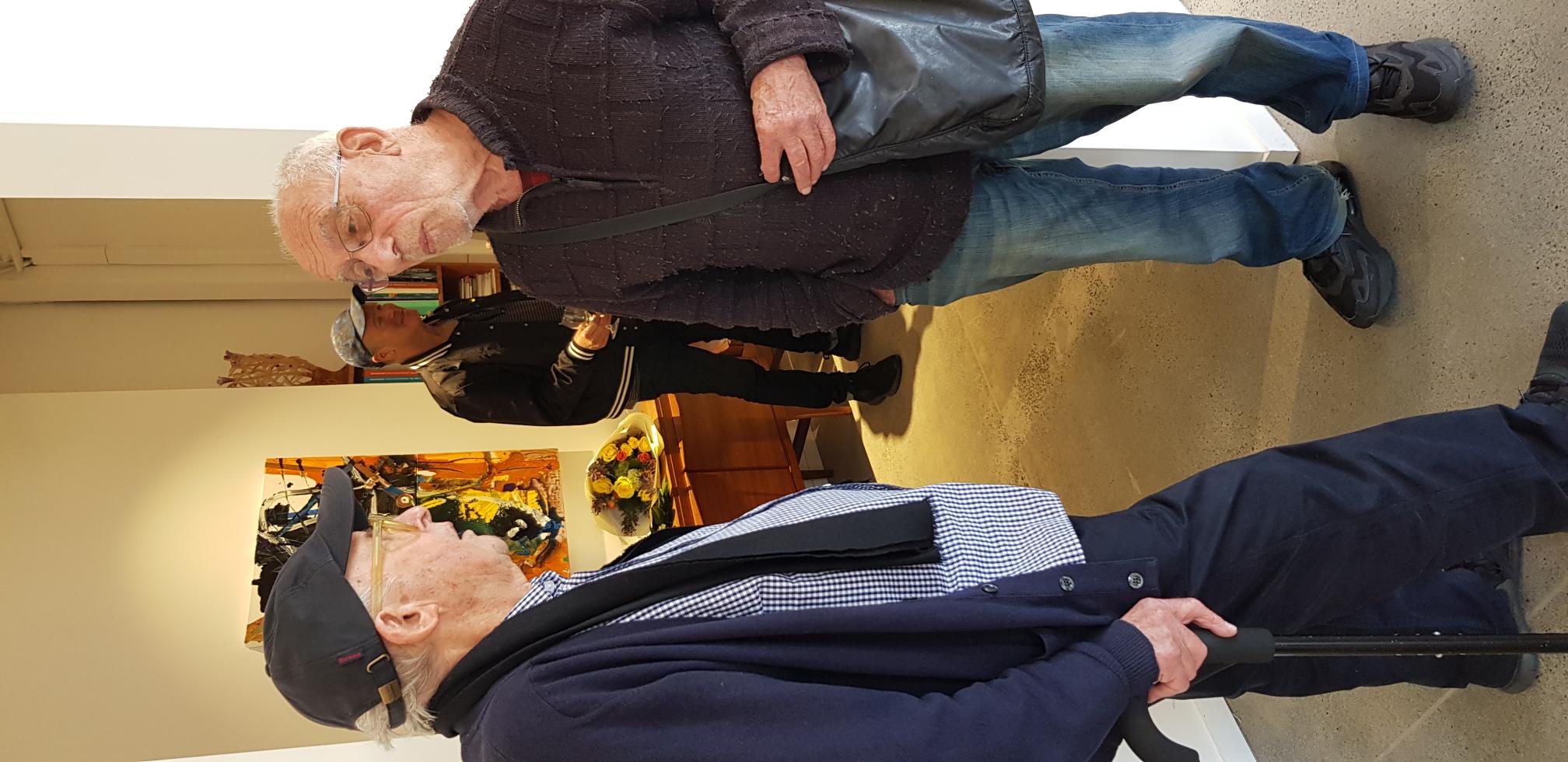
Billy Apple and Tony Green in conversation at Philippa Blair's June exhibition opening. Photo: Supplied.
He was also very involved in the world, so the conversations weren’t always local. He seemed to make the most of all the occasions he found himself in. Billy wasn’t shy about approaching people. He always spoke his mind. Sometimes he could be cantankerous.
He was an extraordinary personality and very loyal to other artists. He went to their openings. When Terry Maitland, his sign writer died this year, he said, that’s it, no more paintings.
Billy will be much missed because he was very sophisticated in a cultural way. He made it his business to find out what was going on, not in a pushy way. He didn’t hustle. He had high professional standards.
He was highly critical of my work but in a way, it was like having a brother making ironic suggestions of how to improve my art. Yes, he had a very well-developed sense of humour.
Billy didn’t seem to age. I always asked him what moisturiser he used for his youthful skin. He continued to drive and he loved to talk about motor racing and cars.
Billy was a very special, totally unique individual with a very acute sense of observation. I’ll miss him.
Linda Tyler remembers working with Billy when she was with the Gus Fisher Gallery at 74 Shortland Street.
He was interested in heritage architecture and he liked things to be done properly. He was a perfectionist. When the gallery was sold, the two lamps that enhanced the front entry went missing. Billy was irate and he replaced them with a couple of lights cast from the original moulds but with glass on top. A plaque by his sign writer Terry Maitland in front tells the story and says the lamps finally turned up.
After that, Billy adopted the gallery. There was a paraplegic park outside and he used to visit and park there, bringing his little Westie Macintosh with him. We didn’t mind. He will be missed so much because he was such a fixture on the art scene. He was a totally Auckland character.
You have to admire his relentless commitment to his career. There wasn’t an occasion that he didn’t work all the angles. He was always there for his art, looking for collaborations especially with younger artists, looking to the next generation. As long as he could find people as passionate as he was about conceptual ideas, he would help them.
We have six of Billy’s works in the collection. I remember when he did them, the colours and proportions had to be absolutely right. He came back to Terry Maitland, the painter six times. Only Terry would have put up with that as they had a great relationship. Terry didn’t mind at all. He got with the programme and could see the way Billy worked.
Billy had tremendous respect for craftspeople who knew their trade and Terry was one of those.
He collected ceramics – especially Dorothy Thorpe Crown Lynn ware. Often, he loaned the collection and talked about what it was that attracted him. Aesthetics were important to him, which is why he loved motor racing. That was the connection to Gary Langsford. Billy would go to the race track and watch him drive his Porsche.
Every bit of Billy’s life he could parlay into the art world. For example, he connected with Tame Iti because they had spent time as children in Ruatoki then worked with him site-specific works including on the wharenui, Te Ranimoaho on the Te Rewarewa Pā, which resulted in an exhibition of two flags at the Stark White Gallery. It was quite a political work on the growing proportion of Māori in Aotearoa.
These sorts of collabs he worked from every angle. He’d insinuate his way into places. He was terribly good at sniffing out opportunities and he’d follow up every lead. He was relentless.
For the artists participating in the Third Auckland Triennial show in 2007, Jenny Gibbs was putting on a lunch at her house in Piha and there was Billy helping put the chickens into the oven. Someone heard her say, who invited Billy? He was terribly good at sniffing out what was going on and everybody was delighted to have him. He was indefatigable. Billy thrived on social connections.
And we have Mary to thank for his incredible long life. She was like his secretary and manager. Because she was a nurse, she had the skills at the end to make sure he was comfortable. It was her care that got him where he was. 85 years old is pretty good. And the energy levels before he died were amazing.
Everybody has had some connection to Billy. You couldn’t find a gallery space where he hadn’t proposed an intervention.
Nathan Haines bonded through jazz.
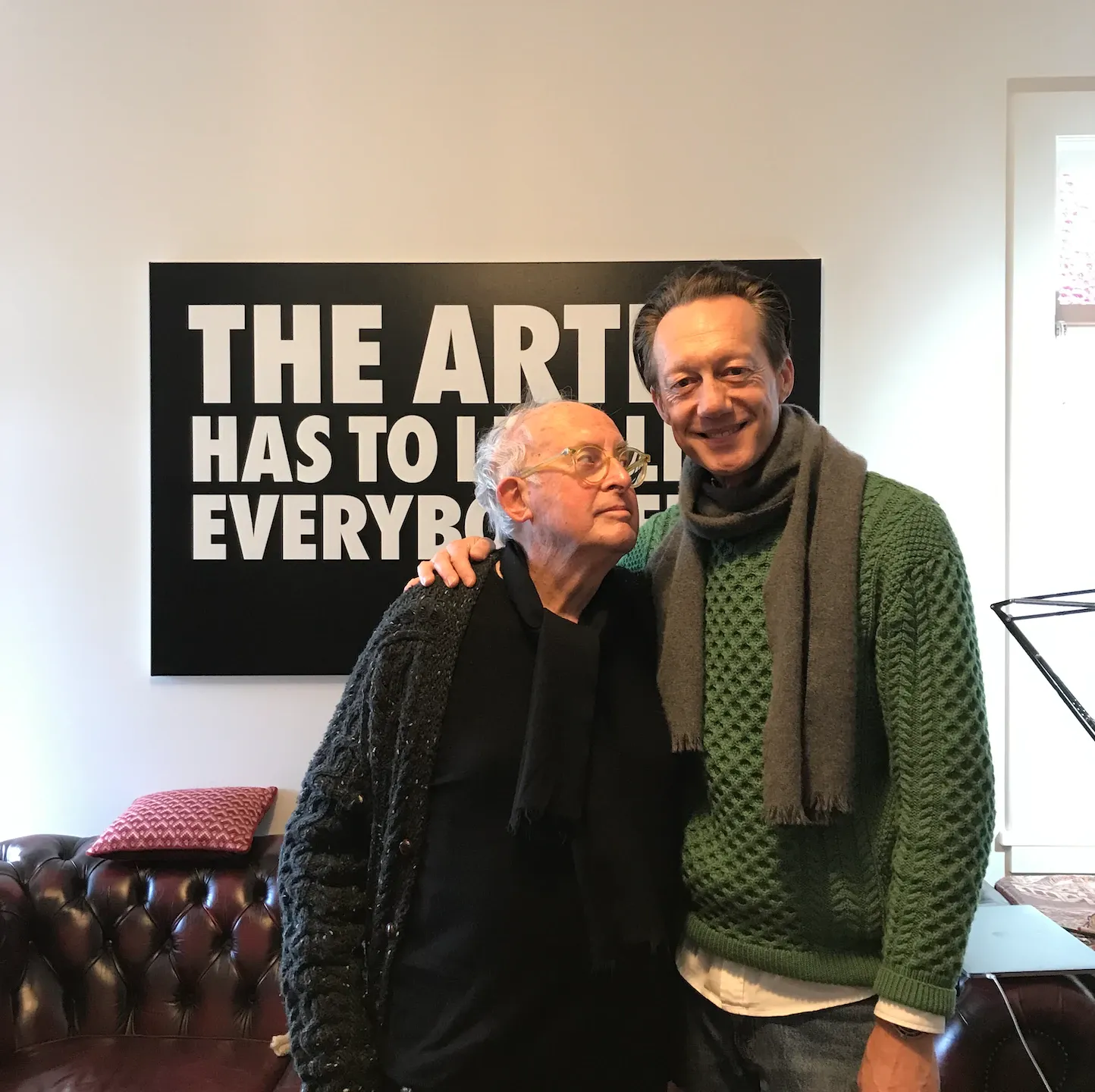
Billy and Nathan Haines. Photo: Supplied.
Billy was a big jazz guy. Because he lived in New York City he saw John Coltrane at the Village Vanguard in the 1960s. I can’t explain how it must have been to live through that period of music in that club.
I wasn’t too aware of Billy’s art work. We met through music. He said, let’s do some work together. I’d come back from London and we did a collab out at the Te Uru Waitakere Contemporary Gallery. I did a piece of work called Woodwind Brass Percussion and Strings based on the music of Jonathan Besser and did a live performance at Billy’s exhibition. He put together Soundworks 1968 – 2015 linking the words to the musical score. And that’s how we started hanging out together.
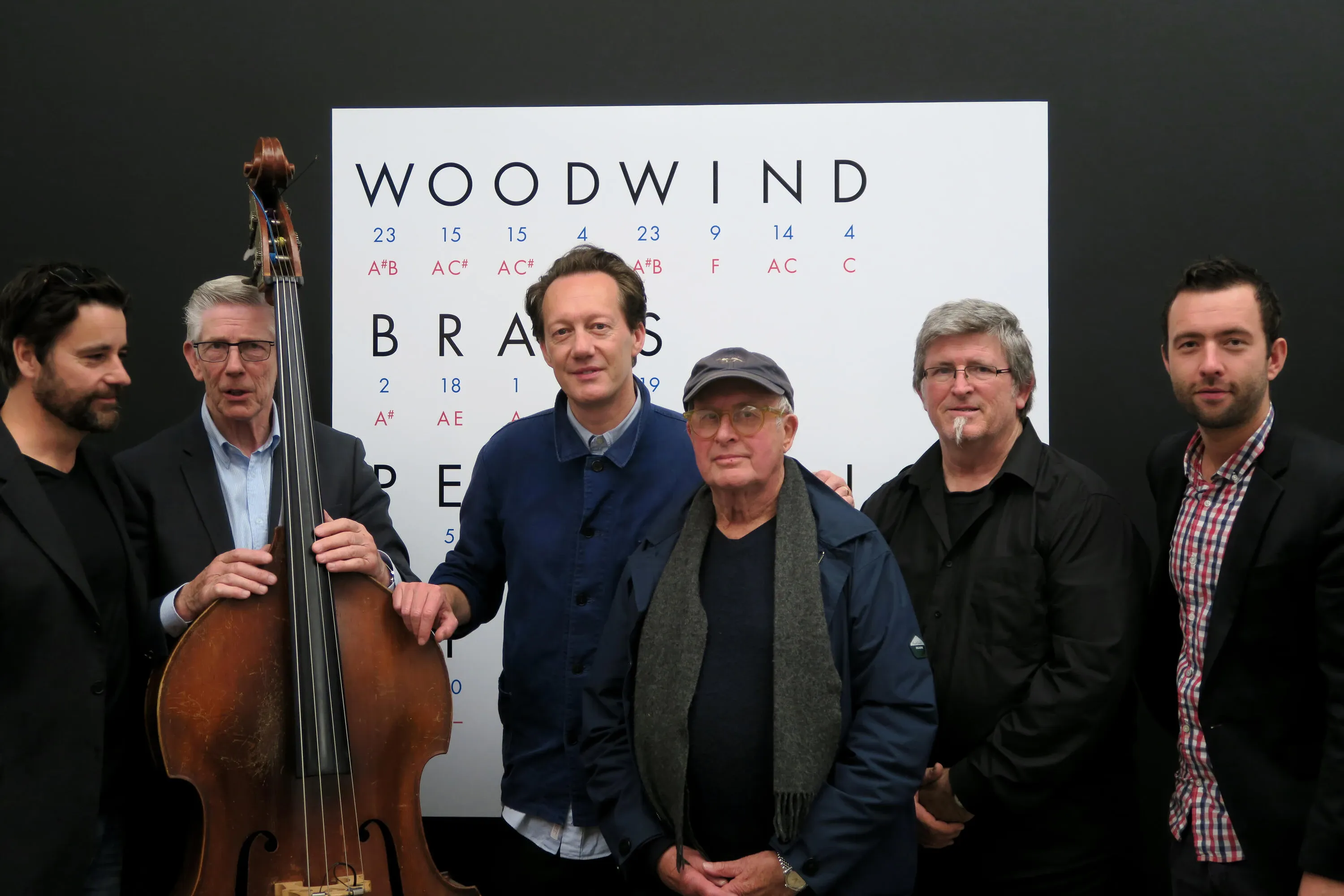
Billy and Nathan (centre) combining their talents at Te Uru Waitakere Contemporary Gallery. Photo: Supplied.
He was a huge motor racing fan and I am too. I’ve owned lots of classic cars and motorbikes. I used to take Billy out to Hampton Downs motor races to watch Gary Langsford race his cars. That’s how we became really good friends. Every time we got together we’d talk about motor racing and what we were going to do together. He was always planning.
I’d always invite him to my gigs and he often came.
Last year, he wasn’t so mobile but he wanted to do a logo for me. I said I was having an amazing gig at the Wellington Jazz Festival at the Opera House. He did my own Billy Apple poster and my name as a logo – the N & H – with a big space around the words. He did the artwork for no charge and let me keep the 20 he printed to sell and keep the money. He also did a painting on canvas as a gift to me. He was very generous. He wanted to do it as a token of our friendship.
Although there was a 40 year age gap between us, I never thought of him as an old man. He had an incredibly sharp quick mind and a very young way of looking at things. He never talked about the old days. It was always about the new work he’d do.
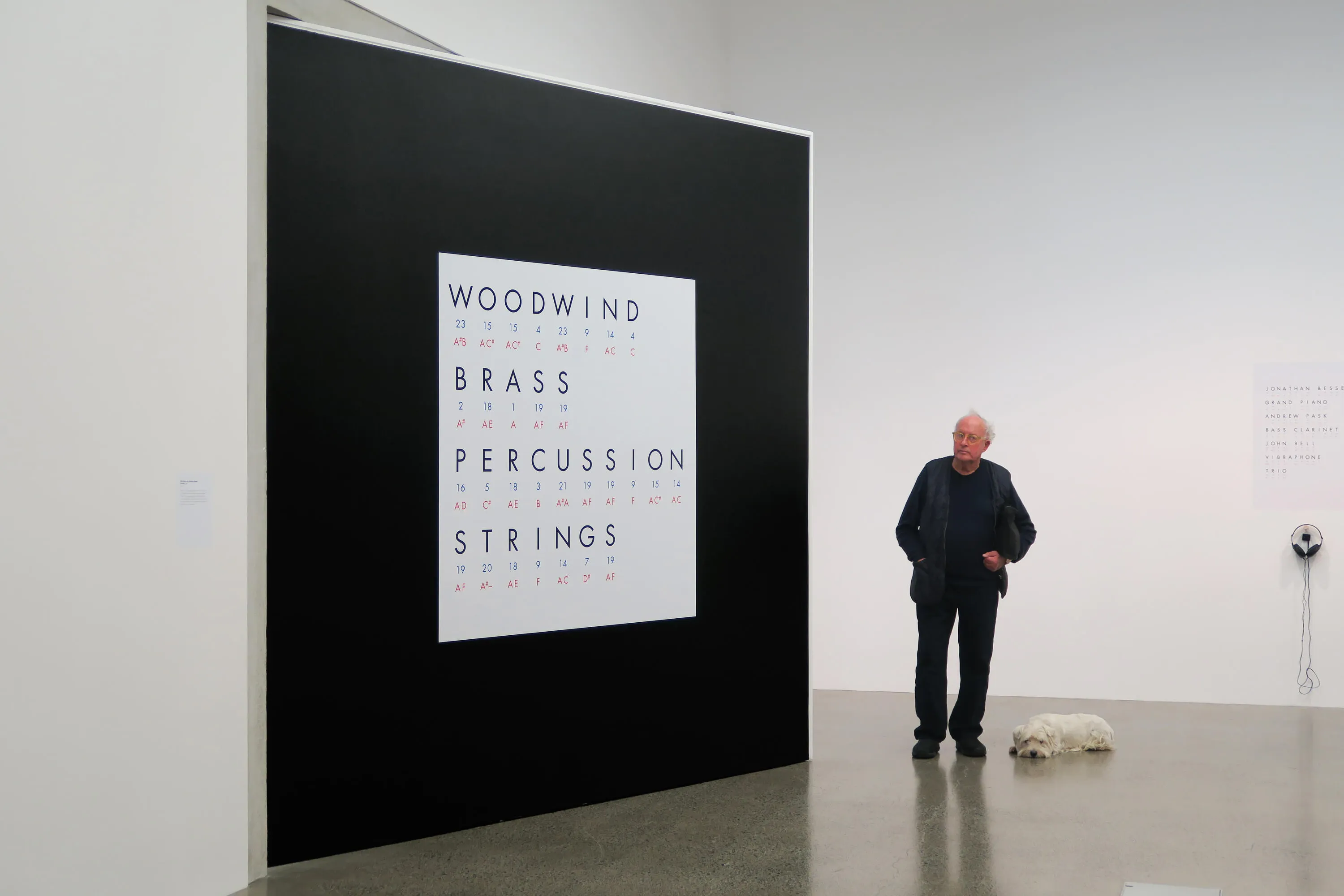
Billy with his beloved Mac by his side. Photo: Supplied.
Mary was amazing too. He didn’t do much without her by his side. She was always there.
My friend Martin Poppelwell was also his close friend. Last year he said, if I was thinking of doing some work with Billy, I better hurry up. Too late. I really miss him. He was a unique guy. I just read the Christina Barton book and thought wow. I now have even more respect for him. An incredible guy.
